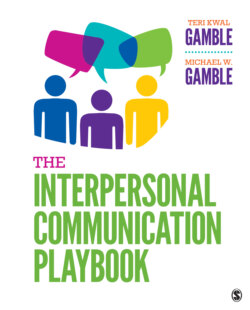Читать книгу The Interpersonal Communication Playbook - Teri Kwal Gamble - Страница 81
На сайте Литреса книга снята с продажи.
We Have Perceived, Ideal, Possible, and Expected Selves
ОглавлениеEach of us possesses a perceived self, an ideal or possible self, and an expected self. Sometimes, these views of the self can conflict with one another.
The perceived self is a reflection of your self-concept. It is the person you believe yourself to be when you are honest with yourself. Usually, there are some aspects of the perceived self that you wish to keep secret from others. For example, you might hesitate to let others know that you do not think you are good-looking or intelligent, that you are fixated on becoming wealthy, or that you are more concerned for your own welfare than theirs. To accomplish this, you engage in impression management; you exercise control over your behavior in an effort to elicit the desired reaction.25 The possible self is the self you might become one day—the one you think about becoming. You may, for instance, want to be a passionately loved self, an accomplished self, or a rich self. The expected self is the one others assume you will exhibit. It is based on behaviors they have seen you display in the past or stereotypes they hold. Your ideal self is an idealized version of you—the person you wish to be and admire in your role models. For example, you may want to be likable, and so you try to be a likable person. If your ideal self is very different from you, then you might feel dissatisfied with your life.
